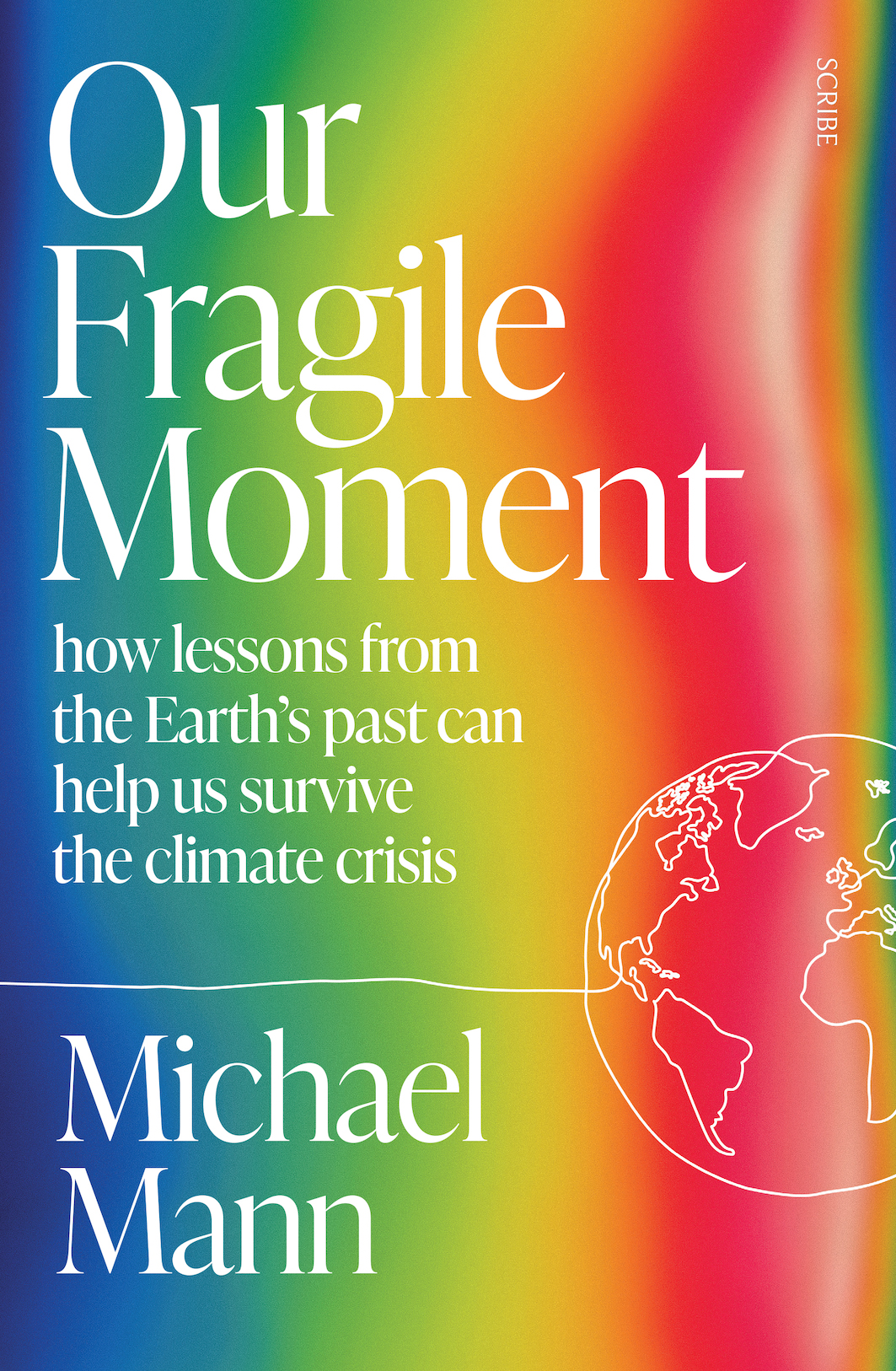Climate swings happened before. What can they teach us?
The study of Earth’s history betrays some degree of resilience: Climate change is a crisis, but a solvable crisis.
The Reading Room
Welcome to our Reading Room. Dive into a deeper conversation and find leads for your reading list with our collection of extracts from upcoming books - by writers you know, and writers you should get to know.

Despite our ongoing search — which, with the recent advent of the James Webb telescope, now extends out nearly fourteen billion light years — we have thus far found no other planet in the universe with such benevolent conditions. It’s almost as if this planet, Earth, was custom made for us. And yet it wasn’t. For the vast majority of its 4.54 billion years, Earth has proven it can manage just fine without human beings. The first hominids — proto-humans — emerged a little more than two million years ago. Only during the past 200,000 years have modern humans walked the Earth. And human civilizations have existed for only about 6000 or so years, 0.0001 percent of Earth’s history — a fleeting moment in geological time.
The asteroid impact sixty-five million years ago that generated a global dust storm chilled the planet, killing off the dinosaurs and paving the way for our ancestors, tiny shrew-sized proto-mammals that scurried about, hiding from their saurian predators.
With the dinosaurs no longer around, these critters could now come out from the shadows, fill new niches, and gradually branch out to produce primates, apes, and eventually us. Though such an event would prove devastating for modern human civilization if it happened today, our real and urgent threat is from fossil fuel burning and carbon pollution, and it is warming, not cooling.
Climate has shaped and guided us from the start. The drying of the tropics as the planet cooled during the Pleistocene epoch of the past 2.5 million years created a niche for early hominids, who could hunt prey as forests gave way to savannas in the African tropics. Yet drying today threatens drought and wildfire in many regions. The sudden cooling episode in the North Atlantic Ocean 13,000 years ago known as the Younger Dryas, which occurred just as Earth was thawing out of the last ice age, challenged hunter-gatherers, spurring the development of agriculture in the Fertile Crescent. A similar North Atlantic cooling event looms today as Greenland ice melts, freshens the waters of the North Atlantic, and disrupts the northward ocean conveyor current system. It could threaten fish populations and impair our ability to feed a hungry planet. The Little Ice Age of the sixteenth to nineteenth centuries led to famines and pestilence for much of Europe, and contributed to the collapse of the Norse colonies.
Yet it was a boon for some, such as the Dutch, who were able to take advantage of stronger winds to shorten their ocean voyages.
The Dutch West and East India Companies became the dominant maritime trading companies, holding a near monopoly on European shipping routes to South and North America, Africa, Australia, and New Zealand. They seemingly ruled the world. For a while. Just like the dinosaurs did. For a while. As we can see, the story of human life on Earth is a complicated one. Climate variability has at times created new niches that humans or their ancestors could potentially exploit, and challenges that caused devastation, then spurred innovation. But the conditions that allowed humans to live on this Earth are incredibly fragile, and there’s a relatively narrow envelope of climate variability within which human civilization remains viable. Today, our massive societal infrastructure supports more than eight billion people, an order of magnitude beyond the natural “carrying capacity” of our planet (the resource limit of what our planet can provide in the absence of human technology). The resilience of this infrastructure depends on conditions remaining the same as those that prevailed during its development.
“Uncertainty isn’t our friend. It is, however, a very good reason for even greater precaution and more concerted action.”
The concentration of carbon dioxide (CO2) in the atmosphere today is the highest since early hominids first hunted on the African savannas. It is now already outside the range during which our civilization arose. If we continue to burn fossil fuels, it is likely that the planet will warm beyond the limit of our collective adaptive capacity.
Only by understanding the climate changes of the past and what they tell us about the circumstances that allowed us to thrive. On the one hand, there is the absolute fragility of this moment in time — driven home daily by each devastating wildfire and every “once in a century” hurricane or 110ÅãF day, collective signs that we seem to be slipping into the chasm of an unlivable planet. On the other hand, however, the study of Earth’s history betrays some degree of climate resilience. Climate change is a crisis, but a solvable crisis. New data come to light that help us refine our understanding. Sometimes it changes our previous understanding.
Contrarians insist that this uncertainty is a reason for climate inaction, the implication being that we can’t trust it, or we might somehow overreact in a way that, for example, could hurt the economy.
But just the opposite is true. Many key climate impacts — the increase in deadly and devastating extreme weather events, the loss of glacial ice, and the resulting inundation of our coasts — have already exceeded the earlier scientific projections. Uncertainty isn’t our friend. It is, however, a very good reason for even greater precaution and more concerted action.
A consequence of this uncertainty is that the answers aren’t always cut and dry — this is particularly true as we go back in time and the data become both sparser and fuzzier. Our instinct is to try to come up with simple analogs and definitive conclusions. But science doesn’t work that way, and a complex system like Earth’s climate certainly doesn’t work like that. So we must embrace nuance, too — and indeed it is one of our greatest tools as we seek answers to the key questions about our climate past and our climate future. Different scientific studies often come to at least modestly different conclusions. It is only by assessing the collective evidence across numerous scientific studies that we reach more firm conclusions and begin to establish scientific consensus.
Are we doomed? The answer is that it is entirely up to us.
The Lead is now on Substack.
Become a Member, and get our most groundbreaking content first. Become a Founder, and join the newsroom’s internal conversation - meet the writers, the editors and more.




